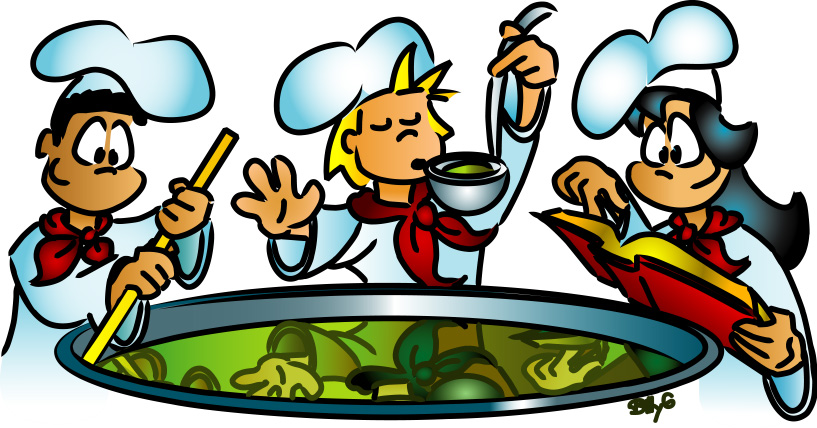Blog
The Kitchen Classroom
In the Engaging Minds Tip of the Week that we shared on Monday, we talked about how cooking and baking are wonderful real-world ways to help your children improve their general organizational abilities and sharpen their math skills. With Passover and Easter right around the corner, you have a terrific opportunity to put this advice to good use so we decided to go into a little more detail about exactly how you can use cooking and baking as teaching tools.
When you are getting ready to prepare something from a recipe, the first step you usually do (or you should) is to read the recipe. Then you know whether or not you need to preheat the oven, if the meat needs to marinate for two hours, or whether you need softened butter or ice-cold butter. In other words, reading the recipe first helps you discover the steps that need to be completed in order to move on to the next stages of preparation. This is analogous to when we encourage students to read all of the directions before beginning an assignment so that they know exactly what is expected of them, in what order, and what needs to be done before the next step can be completed. As your child reads the recipe, you can reinforce to him how this step will make the work to come better organized and easier to complete (both in the kitchen and in the classroom).
The next step in following a recipe should be to get out and measure all of your ingredients. There’s even a term for this in cooking and baking – mise en place, which is French for “everything in its place.” By taking the time upfront to make sure you haven’t left out an ingredient, that you have carefully measured everything and that every ingredient in the recipe is ready to be combined or included, you are stacking the deck in your favor for creating a successful dish. When a student sits down to do her homework, having everything she needs right at hand, or mise en place, means she won’t have to get up and move away from her work, potentially become distracted and forget to complete her assignment. So as she is helping you get out all the ingredients and measuring them for the recipe, your child is internalizing the idea that good pre-organization is a successful way to begin a task.

Speaking of measuring, the King Arthur Flour catalogue once contained the quote, “If cooking is an art, then baking is a science.” While many cooks/bakers will argue that both cooking and baking contain elements of art and science, the quote is somewhat accurate because baking requires very precise measuring of ingredients to produce the desired results while cooking has a bit more room for creative combinations. That said, when you are following a recipe, the point is to stick to the plan as written. But what if you need to adjust the number of servings? Let’s say you are making chocolate chip cookies, and the recipe says it produces 2 dozen large cookies but you need 4 dozen for the school bake sale. Having your child do the math for doubling the recipe is a terrific opportunity to practice his addition of fractions and even some mental math if you want to throw a few extra problems out there (“What if I only wanted to make 1 dozen cookies? If the full recipe for 2 dozen calls for ¾ cup of brown sugar, how much would I need to make half as many cookies?”). Also, using the measuring cups and spoons is a wonderful opportunity for your child to get a visual representation of exactly how these proportions relate to each other. Seeing that ½ cup is twice as much as a quarter cup gives children a clearer, tangible concept of exactly what they are learning about fractions in school.
Now that you have everything ready to go, it’s time to put it all together. A good cook or baker will go over the ingredients and directions of the recipe one final time before moving on to the step of combining ingredients and following the step-by-step directions, just as a well-prepared student will go over the instructions for an assignment one last time before diving in. And after you have completed cooking or baking, a good chef or baker will taste her creation and figure out what worked and what might need changing up next time the dish is prepared. Likewise, a wise student will complete the assignment and check over his work, not only to make sure nothing was left out (something, unfortunately, you just have to live with if you have already cooked or baked your food!) but also to figure out how to improve his process for the next time he sits down to work on a similar assignment.
So, while there are certainly still things that can go wrong in either food preparation or schoolwork, all of this careful planning increases the chances that you and your child will produce a delectable, edible result and a thorough, well-thought-out piece of schoolwork. Bon appetite and happy learning!

